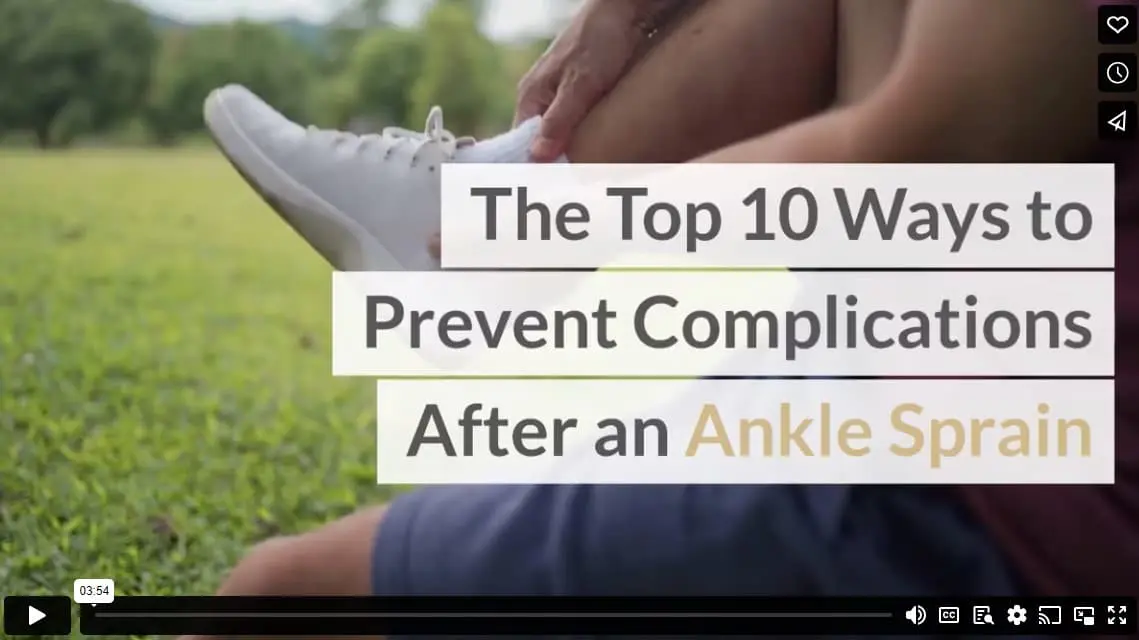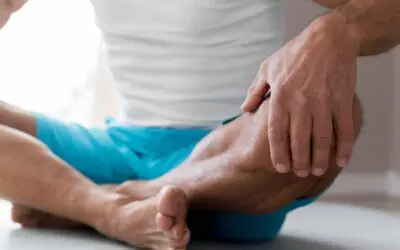Pop!
You probably sink down to the ground right along with your heart when you hear the infamous pop. Your ankle starts to throb, and your mind starts to race. How long will this ankle be out of commission? Is that swelling I can already see? Is that normal? How can I get better as quickly as possible?
You may sit in agony while analyzing the situation, but once you’ve started icing it and your heart rate is down, you can begin to make a plan. You want to get back to activity as quickly as possible, but you want to make sure you do so safely to prevent further damage.
We have compiled the top ten steps you can take to make sure your recovery is complication-free.
Potential Long-Term Complications
An improperly healed ankle can lead to Chronic Ankle Instability, or CAI. Symptoms of CAI include:
- Ankle pain
- Repeated ankle sprains
- Ankle instability
- The ankle giving away
These complications can appear as many as four years after the initial ankle sprain, so even if you return to activity and don’t notice it, that doesn’t mean you avoided a complication.
In addition to CAI, individuals who sprain their ankle at some point in their life are more disposed to early-onset osteoarthritis. This form of arthritis develops after trauma to a joint and can manifest 10 to 20 years after the initial sprain.
Avoiding Complications
Here are the ten steps you can take to prevent further complications after an ankle sprain.
1. Stop right away.
If you suspect you may have sprained your ankle, don’t try to tough it out or play through it. You can accidentally turn a minor sprain into something more serious by not listening to your body.
2. Make sure your sprain is a sprain.
It’s not a bad idea to pay a visit to your podiatrist to make sure your sprain is just a sprain and not also a fracture. Recovery for each will be a little different, so you want to know what you are dealing with.
3. Manage the swelling.
When you bring down the swelling, you also remove stagnant inflammation from the ankle. You can best manage the swelling in your ankle by following the RICE method: rest, ice, compression, and elevation. This is the best initial ankle pain treatment.
4. Rehab the right way.
If you strengthen the muscles above and below the ankle, you decrease the chance of further complications. Work on strengthening your feet, calves, and hips as well.
5. Improve proprioception.
Proprioception, or one’s sense of balance or position, can become skewed following a sprained ankle. Gradually build up from balance and strength training to hopping (with emphasis on the “gradually”).
6. Wait to return.
Returning to activity too quickly after your sprain will increase your chances of reinjuring your ankle. The more you sprain your ankle, the less it will heal each time. If you are unsure about whether your ankle is ready to be put back to work, pay a visit to your podiatrist or physical therapist for the go-ahead.
7. Choose shoes wisely.
When you are shoe shopping, make sure you pay attention to the type of shoe you are buying. Basketball shoes fit and support differently than running shoes. Choosing the wrong shoe for your sport could be a fast track to complications with your ankle sprain. Speaking of shoes, you do need to replace your workout shoes at least annually. It would be best to upgrade your running shoes after clocking 300 to 400 miles on a pair. (And yes, wearing your running shoes around to walk counts toward your miles.)
8. Tape up.
If you are nervous about your ankle, adding extra tape or a brace can give you stability and comfort.
9. Watch your step.
Once you return to exercising, avoid running or training on uneven or unstable terrain. Even if you were able to handle it pre-sprain, it is best to avoid it. Uneven ground is just begging for an ankle that it can twist.
10. Listen to your podiatrist.
When it comes down to it, every foot and every ankle are different. Each injury is individual, and by visiting with an ankle specialist, you can determine what is best in your case. There’s a good chance your podiatrist will have dealt with more sprained ankles in his or her lifetime than you have, so take their word for it when they give you instructions.
By following these ten recommendations, you should be able to be back on your feet quickly.
Video
Infographic
When you hear that infamous pop, your heart sinks and your ankle starts to throb. Learn ten steps to prevent further complications after an ankle sprain in this infographic.





